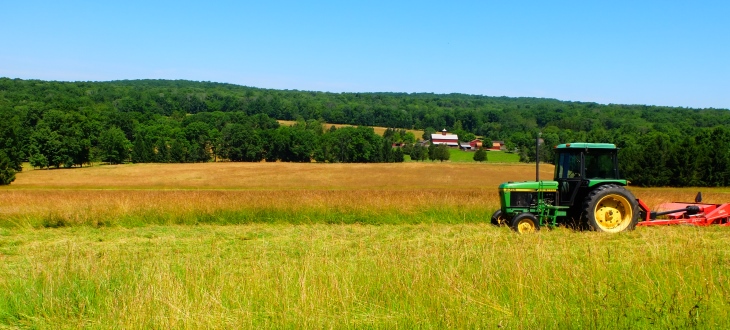The State We're In
60 years of farming left?
The Dust Bowl of the 1930s was one of the worst man-made disasters in our history. Due to poor farming practices and many years of drought, topsoil in the southern plains turned to dust and blew away. Failed crops and dead farm animals led to the hunger and misery of the Great Depression.
Is the world now heading for another agricultural disaster?
At a recent conference, the U.N.’s Food and Agricultural Organization warned that if soil erosion continues at its current pace, the world could run out of topsoil in 60 years.
“Soils are the basis of life,” said Maria-Helena Semedo, the Food and Agriculture Organization’s deputy director general of natural resources. “Ninety-five percent of our food comes from the soil.” Without topsoil, land can’t grow food, hold water and absorb carbon.
What is topsoil? It’s the uppermost layer of soil and it contains organic matter and microorganisms – both critical for plant life. Topsoil is usually less than a foot deep, and experts say it takes 100 to 500 years to build just one inch of it!
According to Semedo, the equivalent of one soccer field of soil is lost every five seconds, potentially leading to the degradation of more than 90 percent of all the Earth’s topsoil by 2050.
Some conventional farming methods – like plowing and leaving bare fields – cause erosion. Others include forest clearing, overgrazing livestock, and repeatedly growing the same crops.
In the midst of the Dust Bowl, Congress passed a law to protect soils. The law recognized that “the wastage of soil and moisture resources on farm, grazing, and forest lands … is a menace to the national welfare.” It established the Soil Conservation Service within the U.S. Department of Agriculture. In the 1990s, the agency changed its name to the Natural Resources Conservation Service.
Today, the Natural Resources Conservation Service works to preserve lands with high quality soils and encourage farmers to adopt techniques to reduce erosion.
In New Jersey, Natural Resources Conservation Service funds have been used to permanently preserve over 21,000 acres of top-quality farmland. These federal funds are often matched with state, county and local funding.
Carrie Lindig, the Natural Resource Conservation Service’s state conservationist for New Jersey, said there’s been a national movement in the past decade to make soils healthier and more resistant to erosion. “If soil is healthy to start with, it won’t move,” she said.
The agency advises farmers to follow four principles:
- Keep soil covered with vegetation, with no fallow ground or bare soil exposed to rain and wind. Use cover crops when not growing food crops.
- Disturb the soil as little as possible, using no-till farming techniques rather than plowing the land.
- Keep plants growing, to feed the soil. “When you have more organic matter in the soil, you don’t have as much (stormwater) runoff,” said Lindig.
- Rotate crops to keep the soil healthier. “If you have multiple species of crops, all the microbes in the soil will make the soil healthier,” she said.
The Natural Resources Conservation Service runs voluntary programs offering farmers financial incentives to improve soil health and protect it from erosion. One example is the Environmental Quality Incentives Program, or EQIP for short. “It takes some of the financial risk out of trying something new,” Lindig explained.
In the depths of the Depression, President Franklin D. Roosevelt said, “A nation that destroys its soils destroys itself.”
Topsoil is among the Earth’s most precious resources. It’s critical to protect our soils and ensure foods can be produced long into the future.
To learn more about the Food and Agriculture Organization’s conference on soil erosion, go to http://www.fao.org/about/meetings/soil-erosion-symposium/en/.
To learn about Natural Resources Conservation Service programs to preserve farmland and protect agricultural soils, go to https://www.nrcs.usda.gov/wps/portal/nrcs/site/soils/home/.
To learn more about how organic agriculture addresses soil health, visit https://rodaleinstitute.org/why-organic/organic-basics/organic-vs-conventional/.
And for information on preserving New Jersey’s land and natural resources – including farmland – visit the New Jersey Conservation Foundation website at www.njconservation.org or contact me at info@njconservation.org.
About the Authors
Alison Mitchell
Co-Executive Director
John S. Watson, Jr.
Co-Executive Director
Tom Gilbert
Co-Executive Director, 2022-2023
Michele S. Byers
Executive Director, 1999-2021
View their full bios here.
Filter
Get The Latest News
From The Garden State
In the
News

